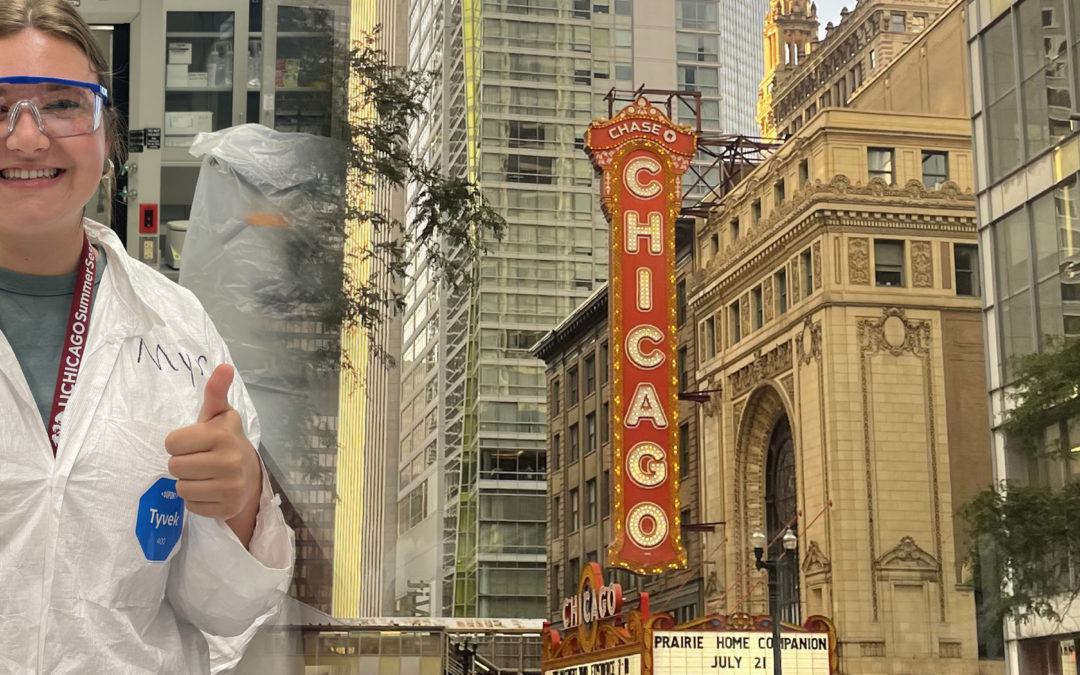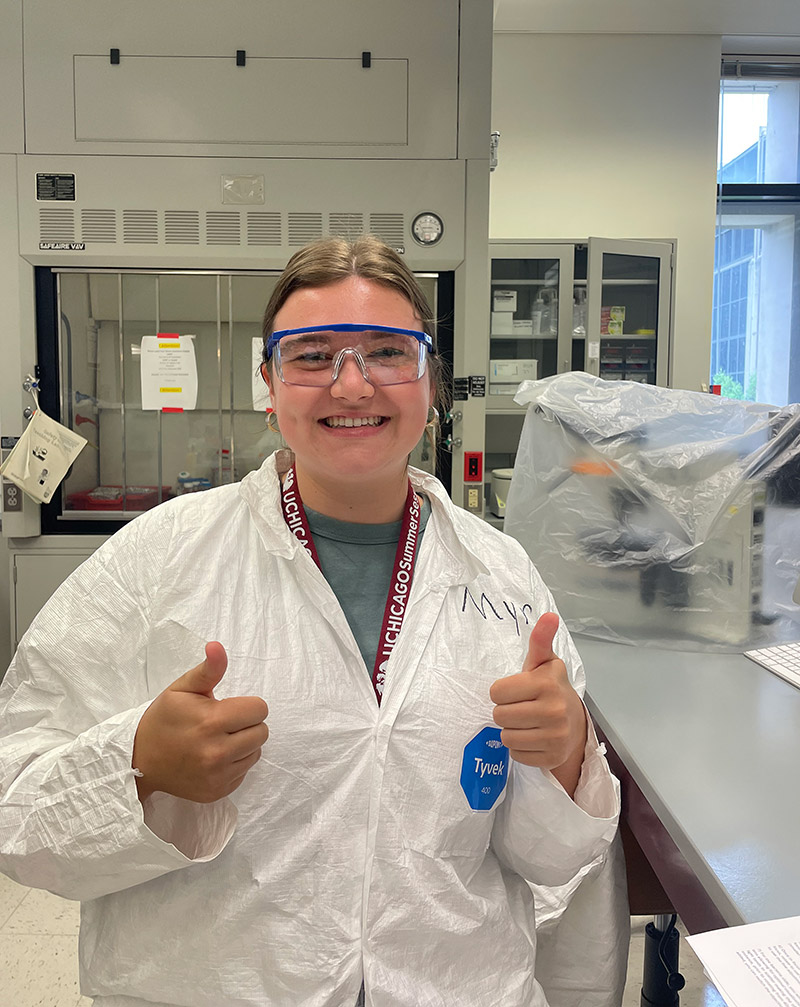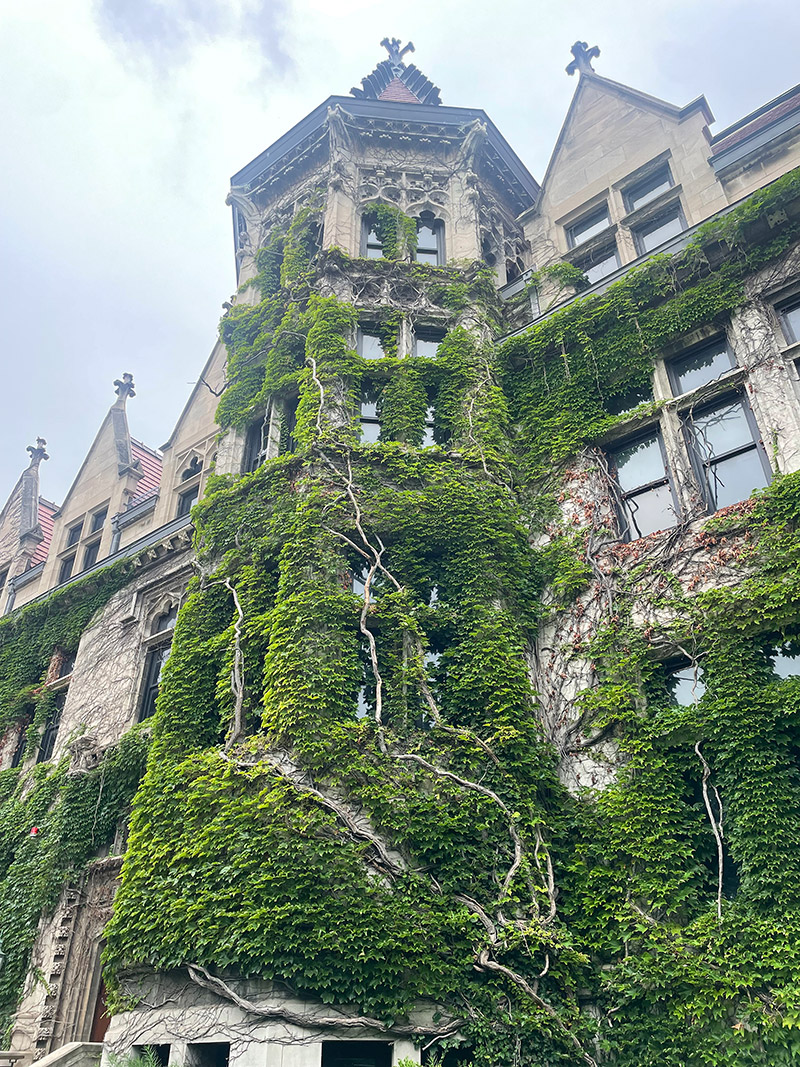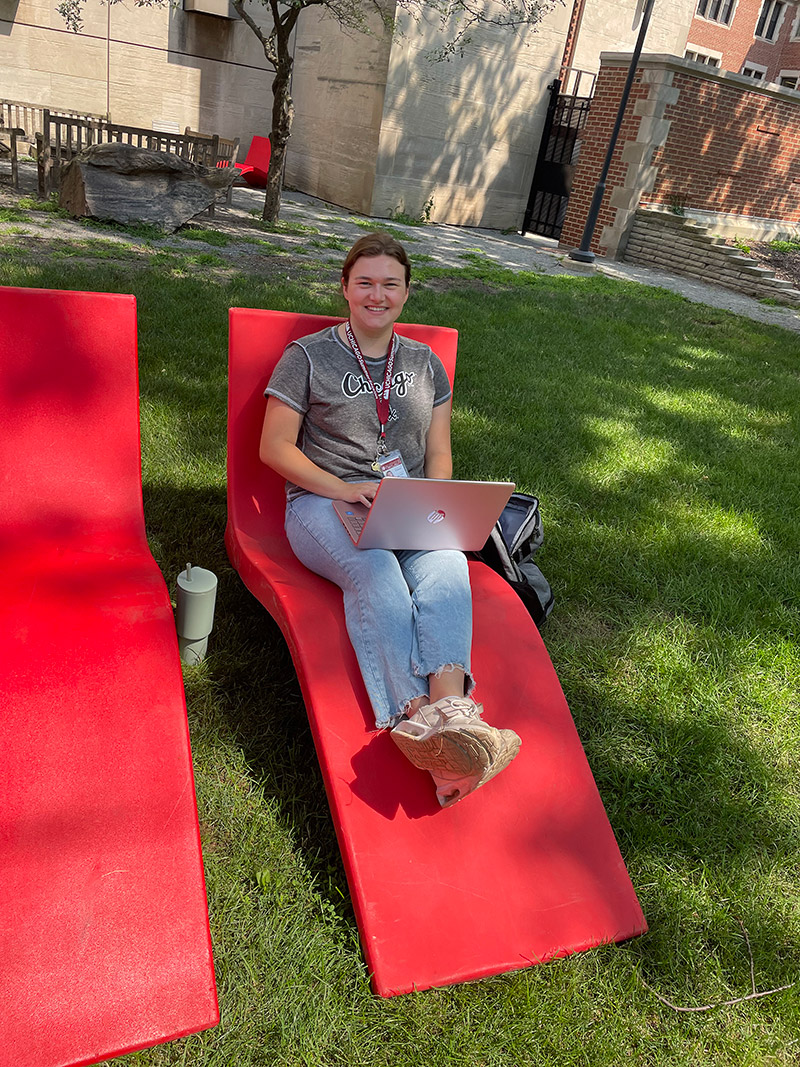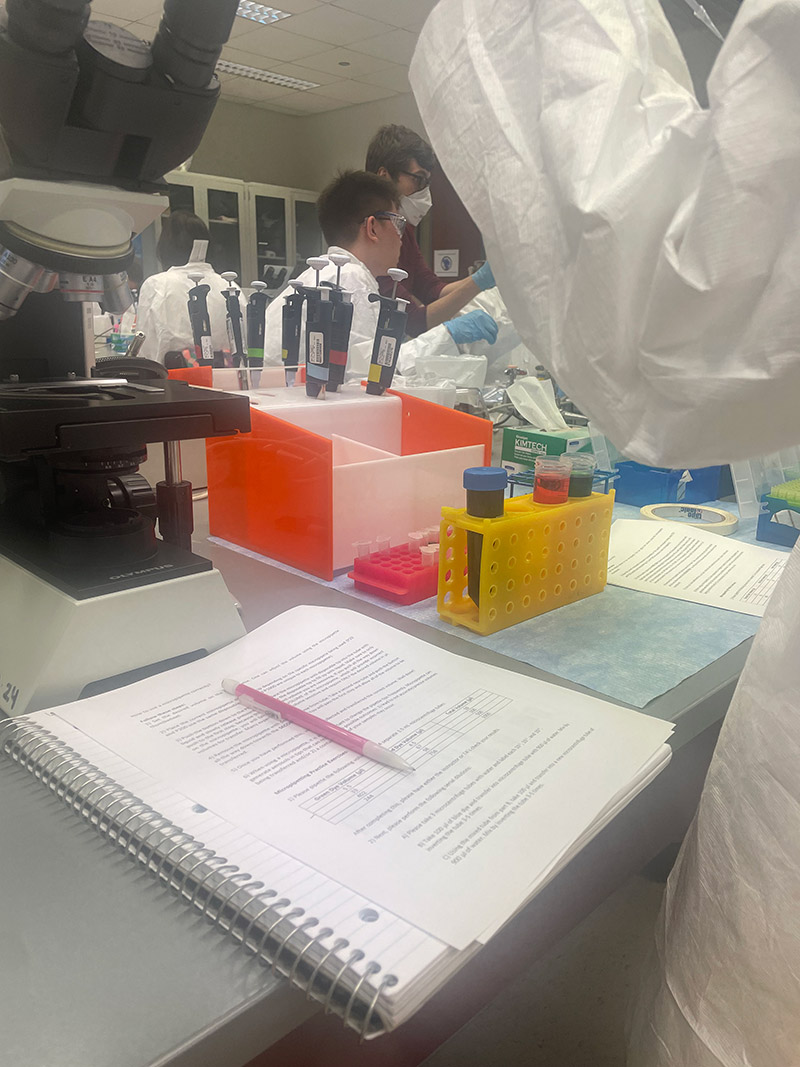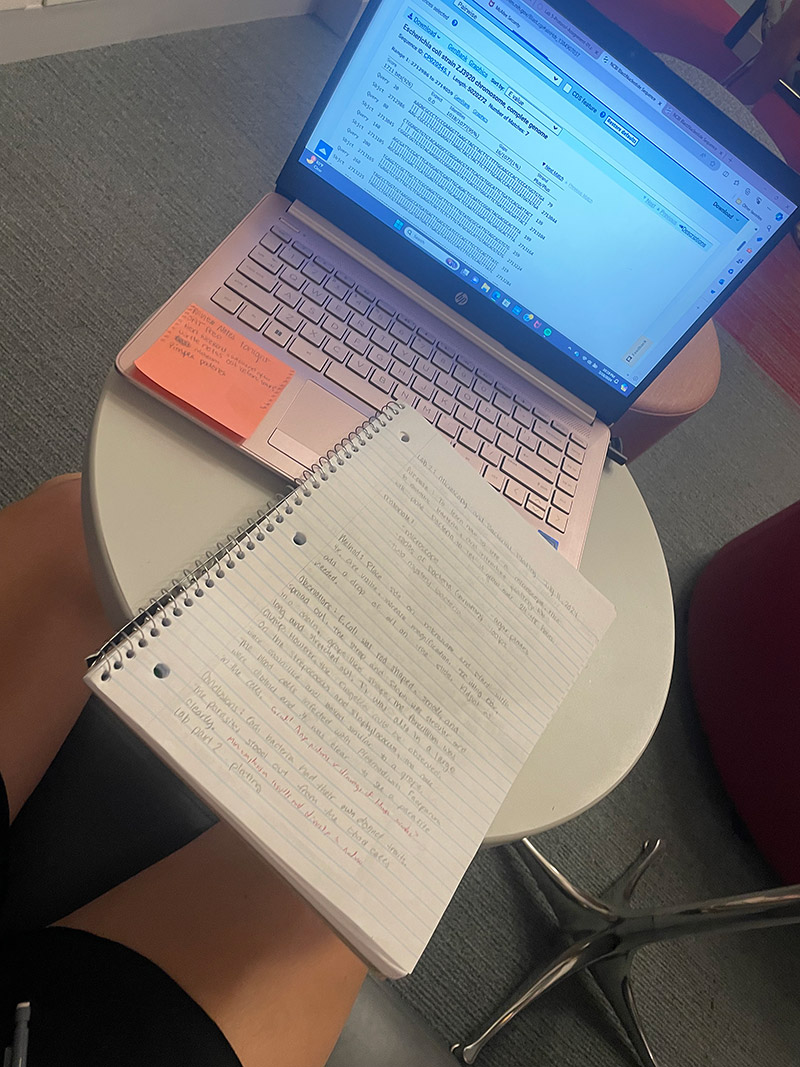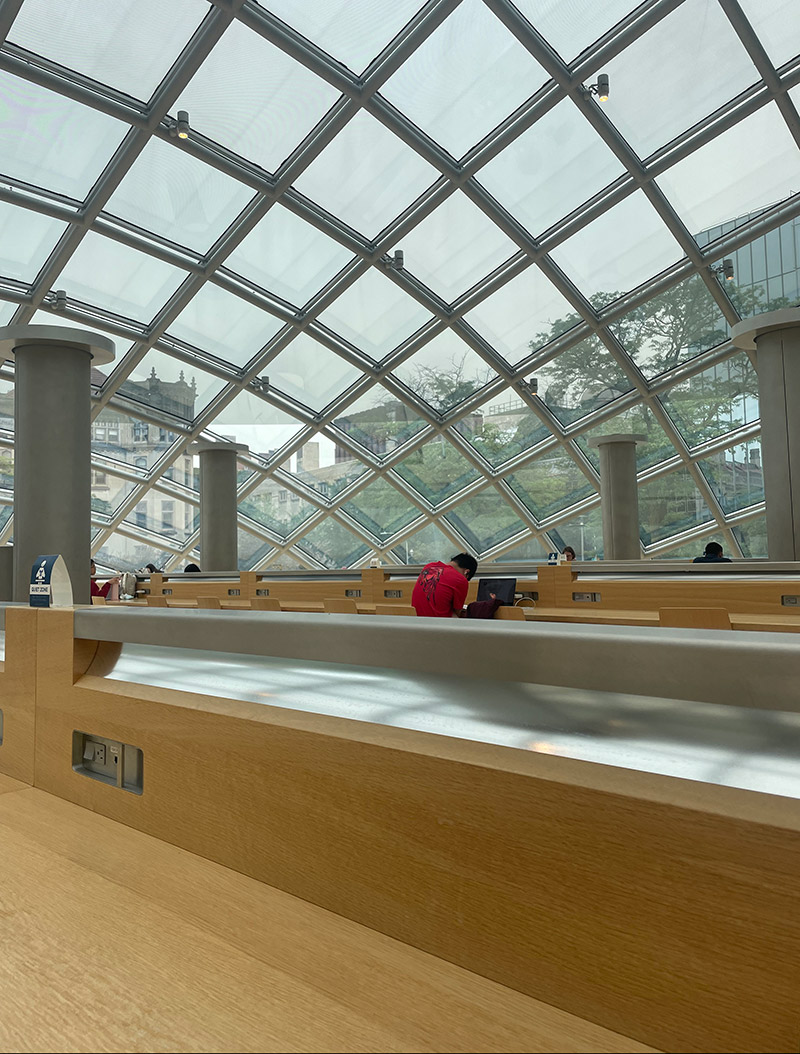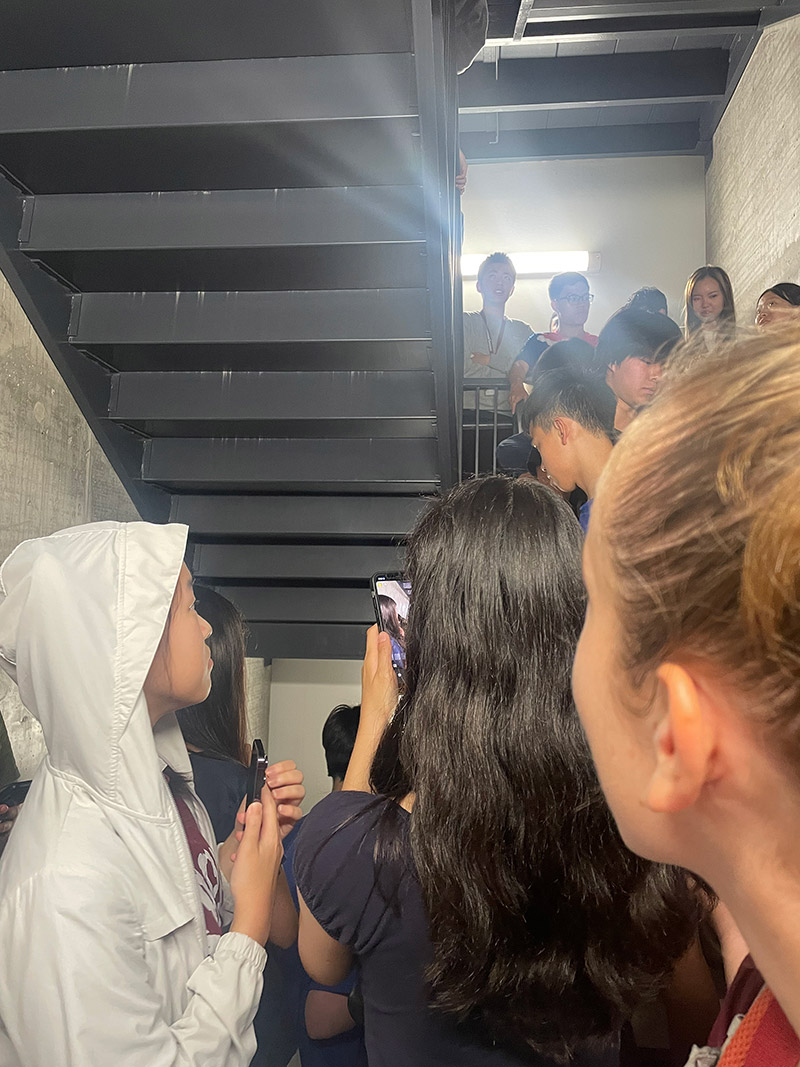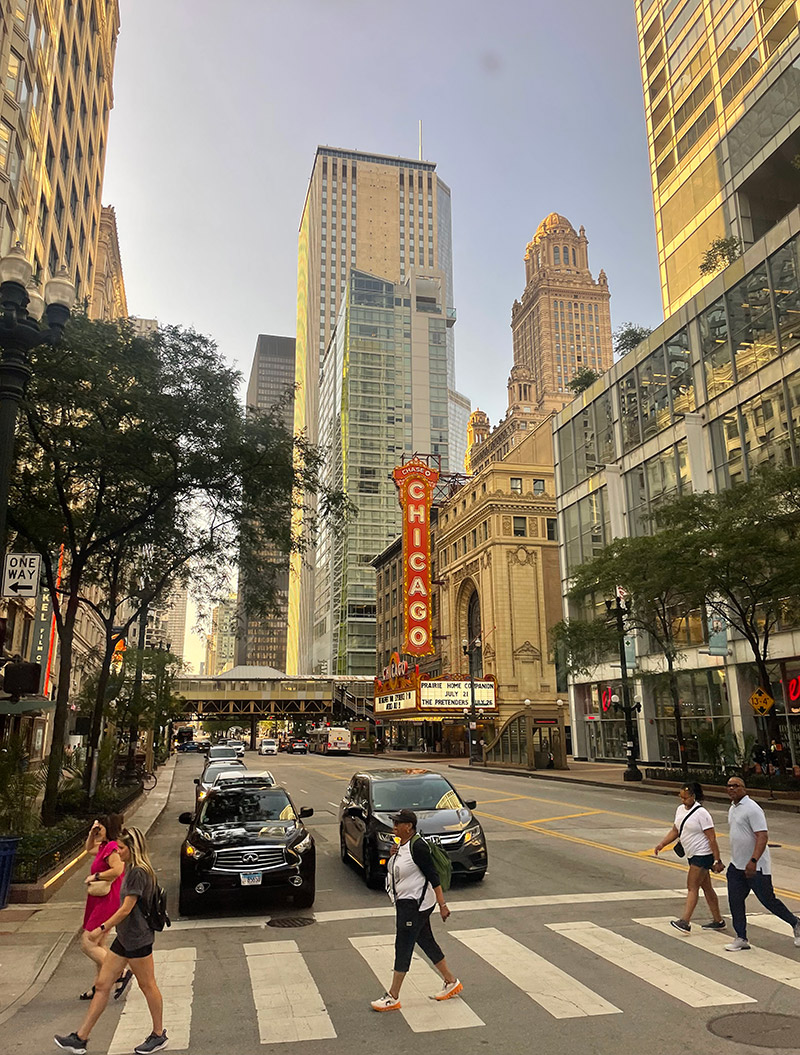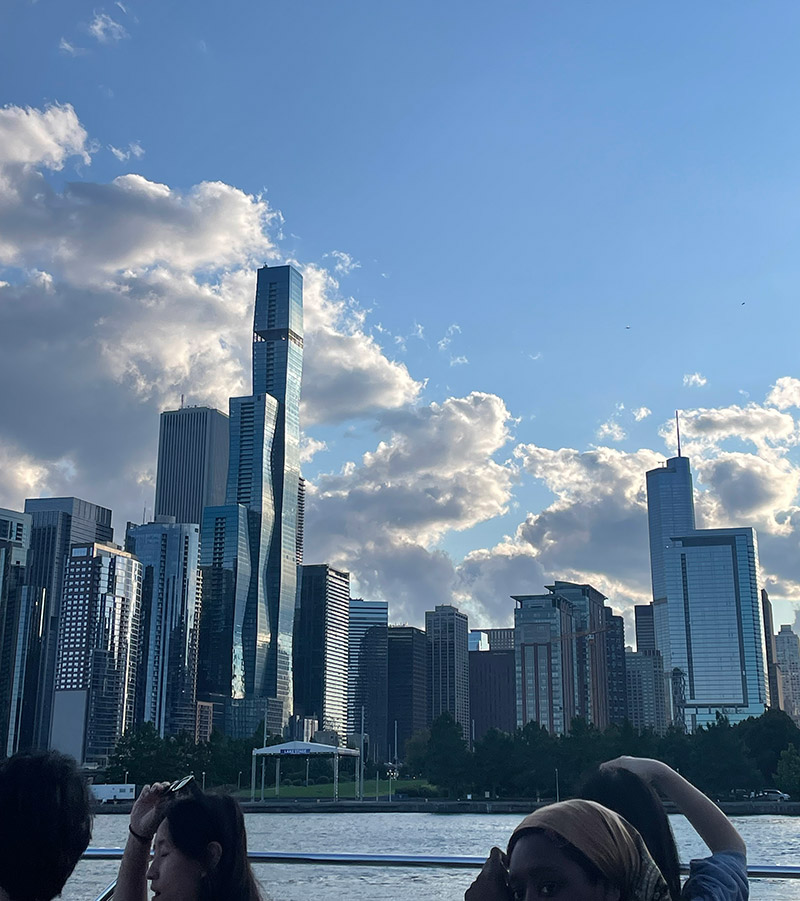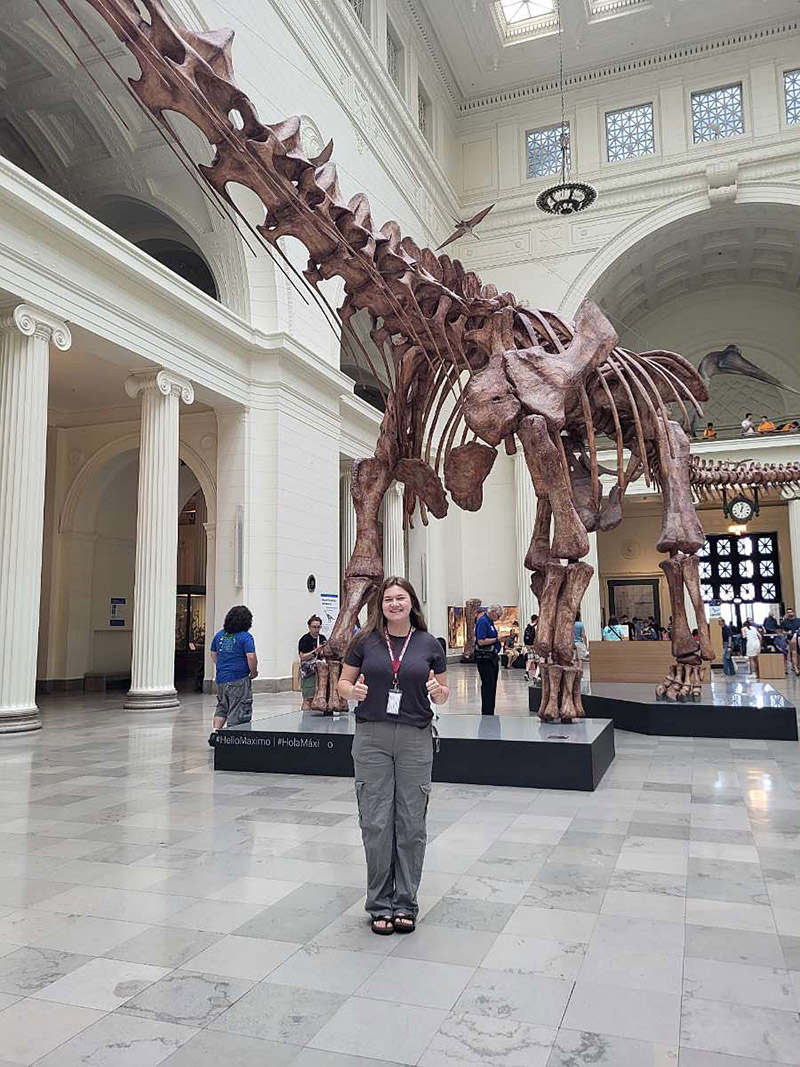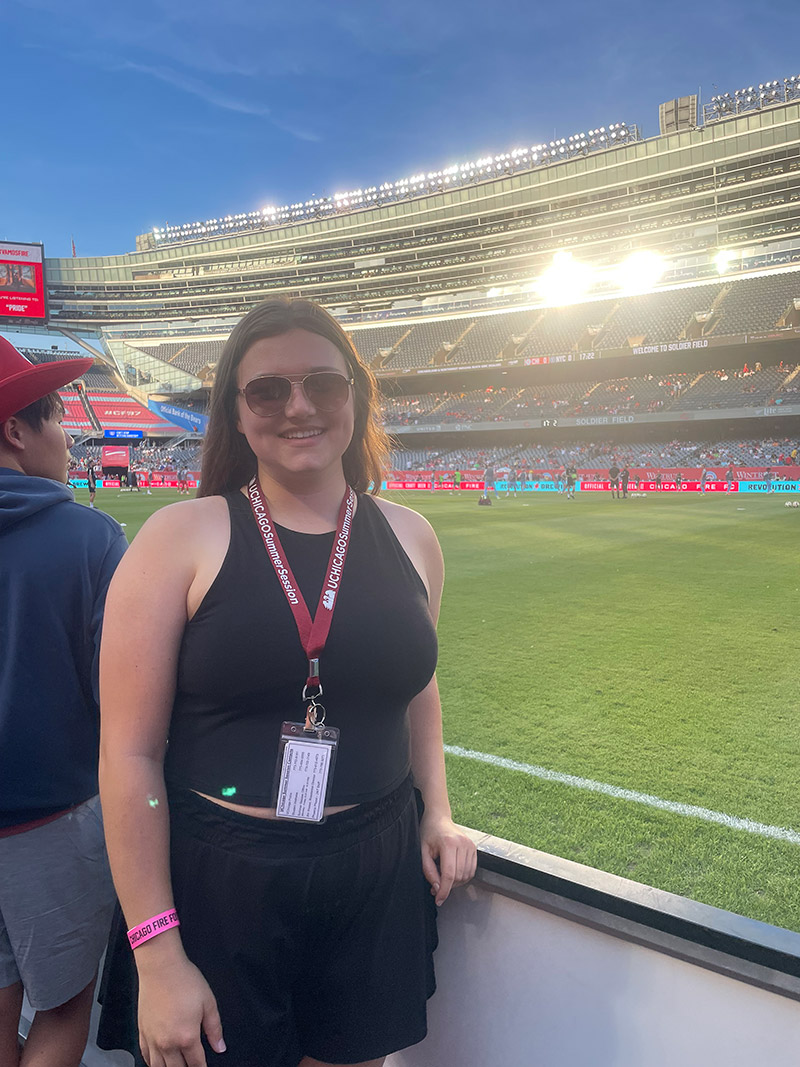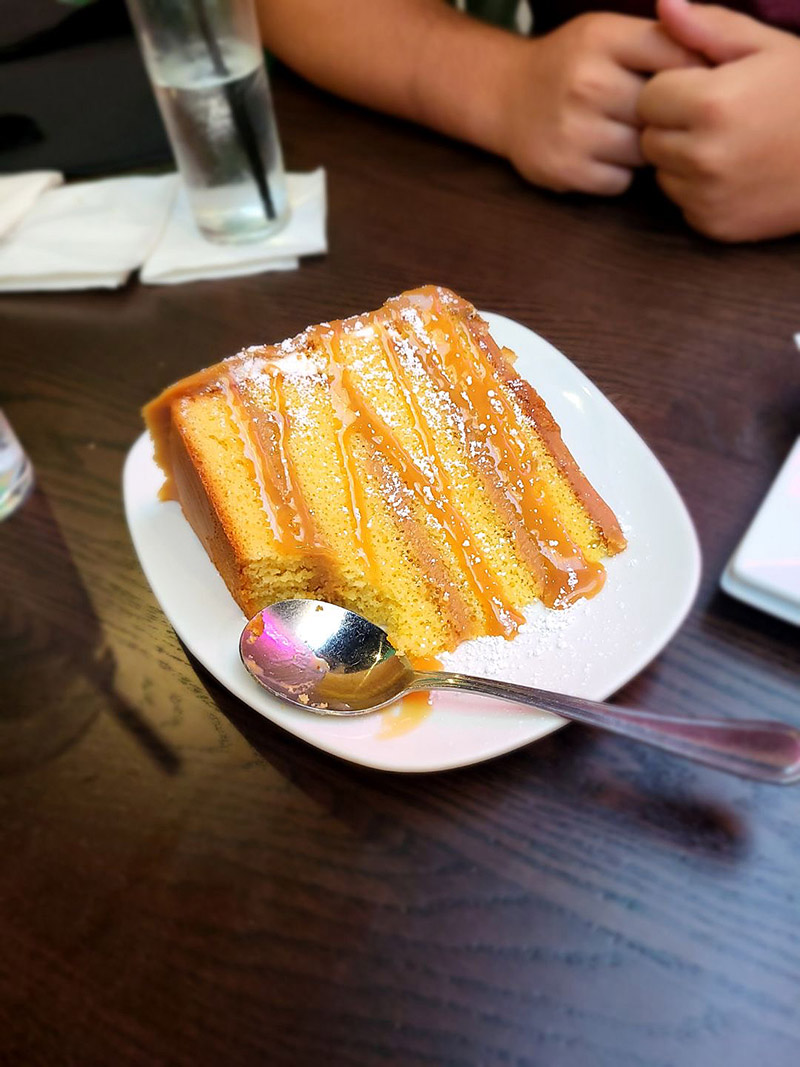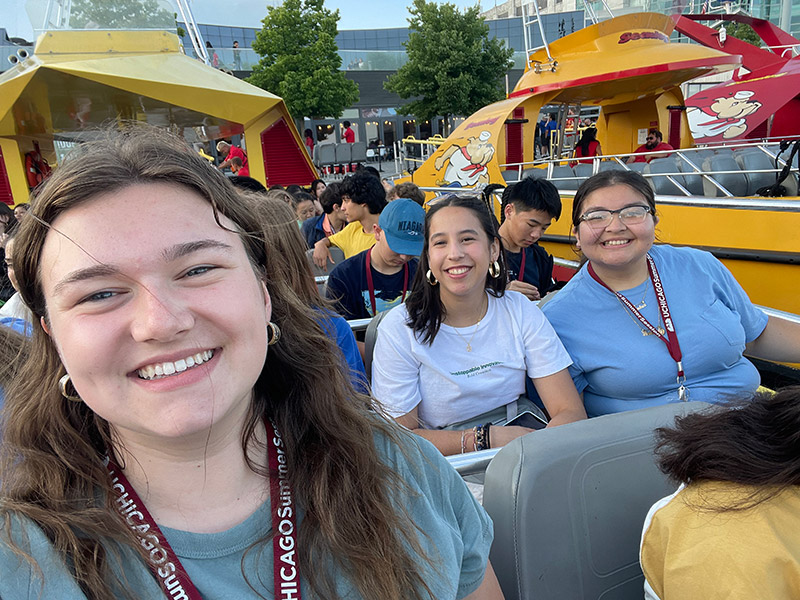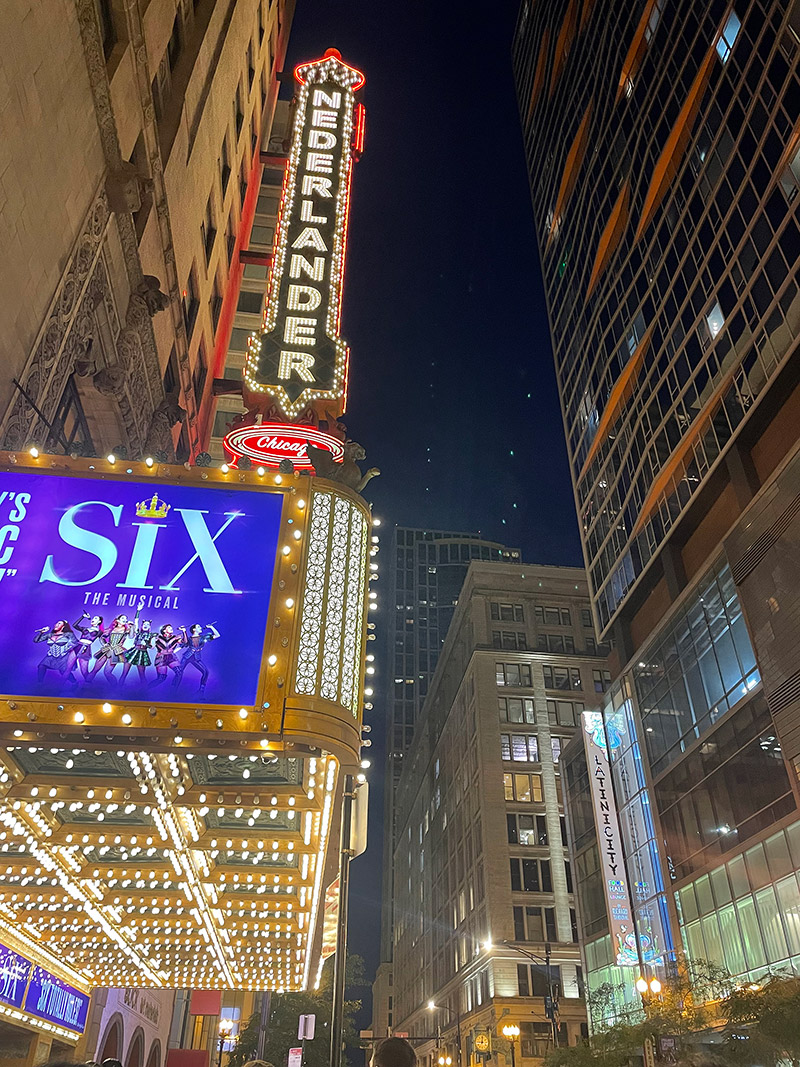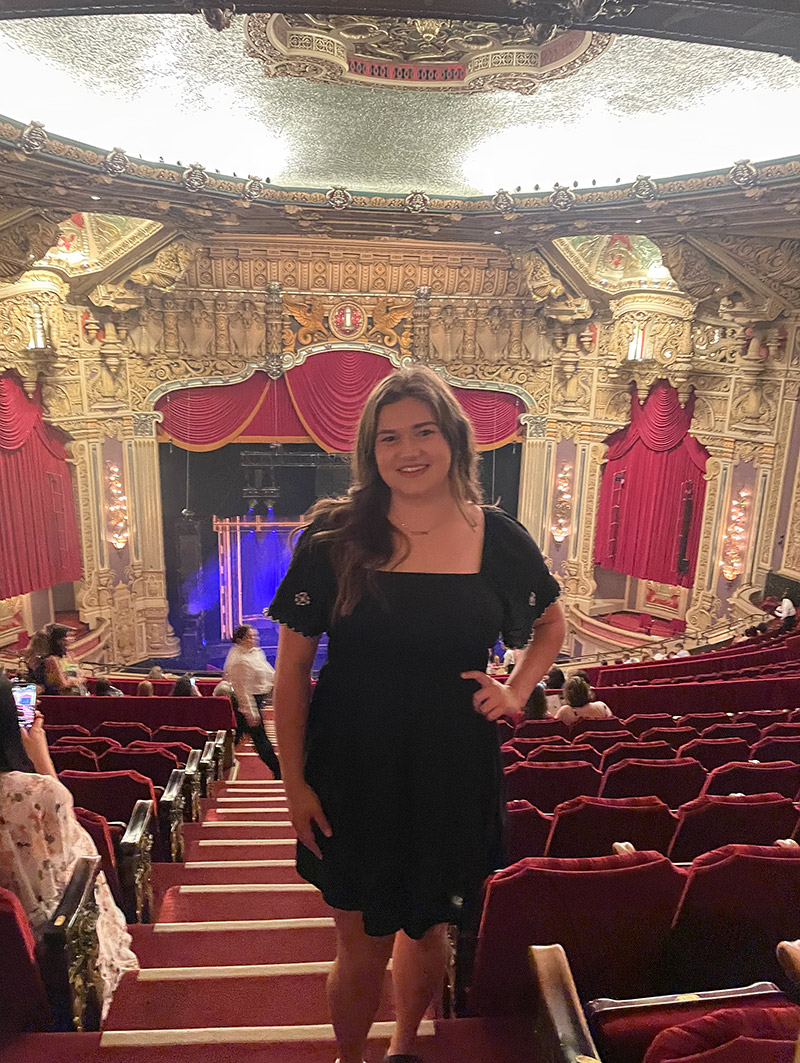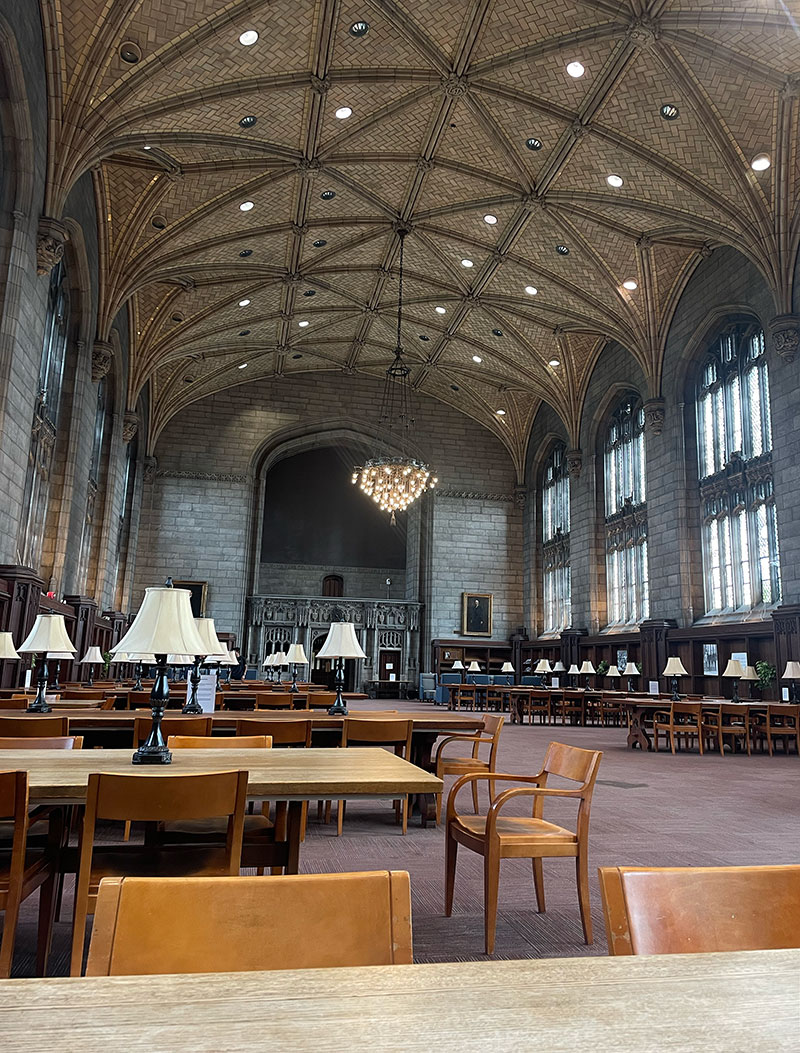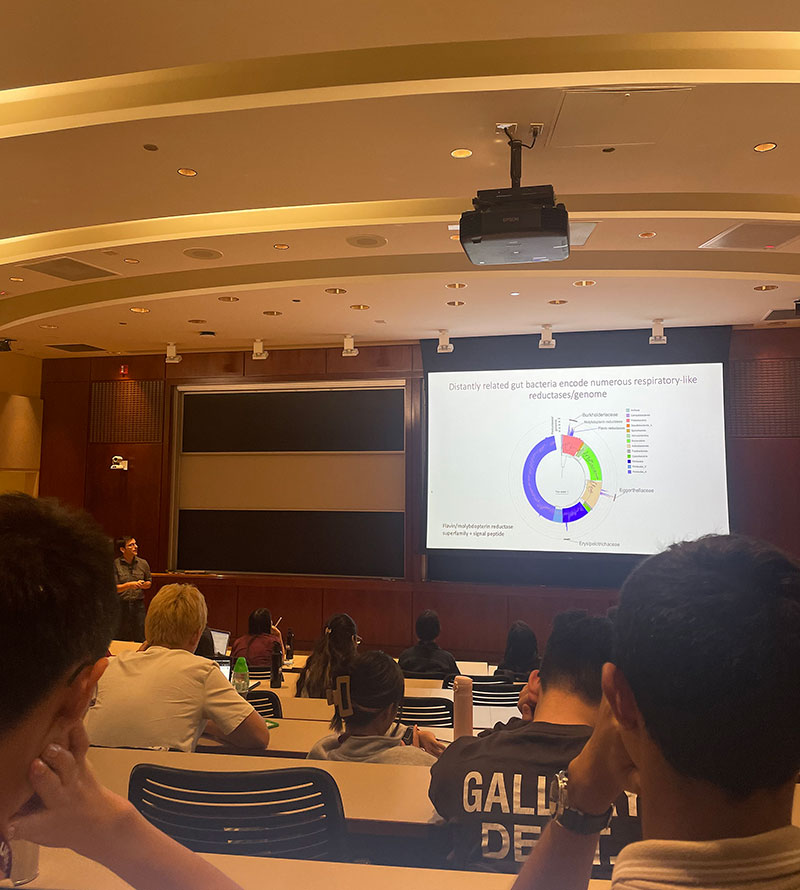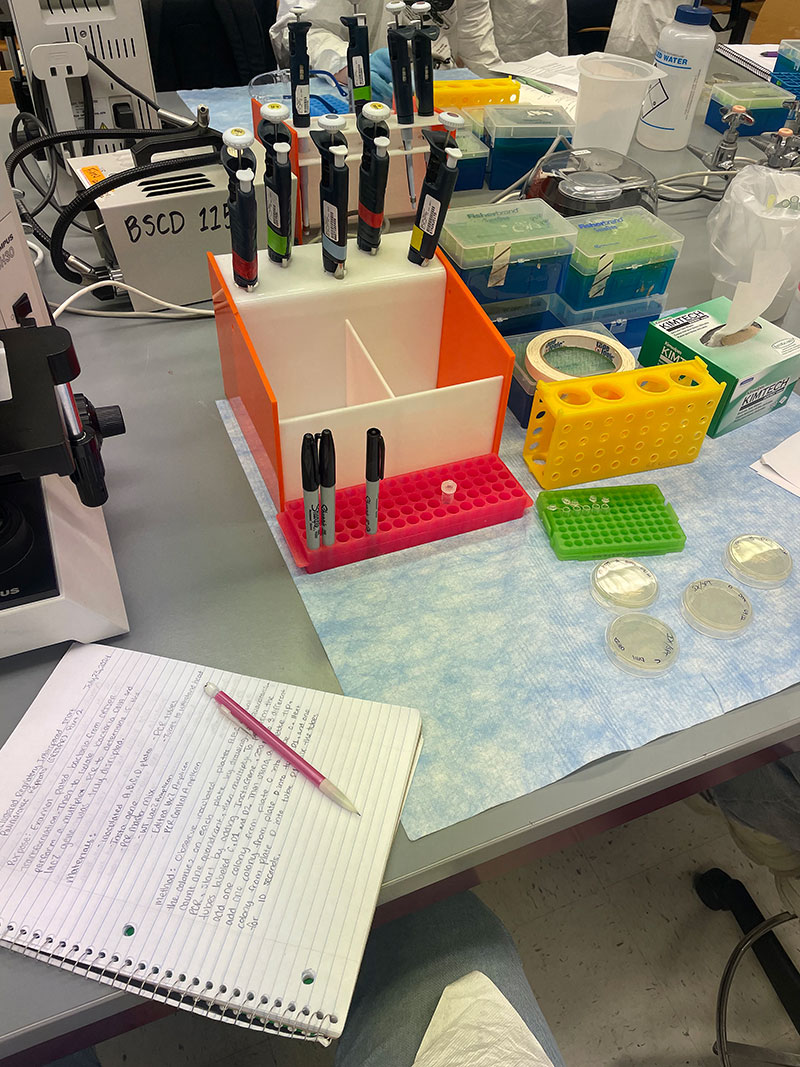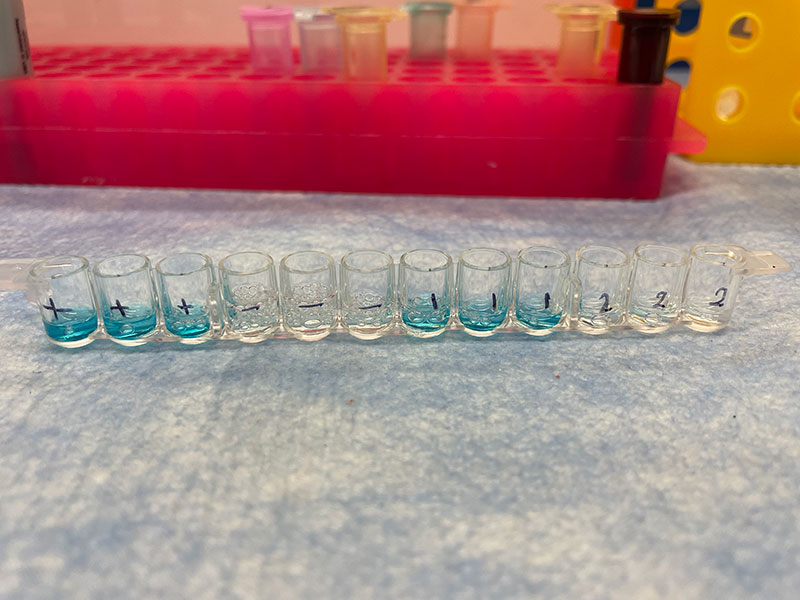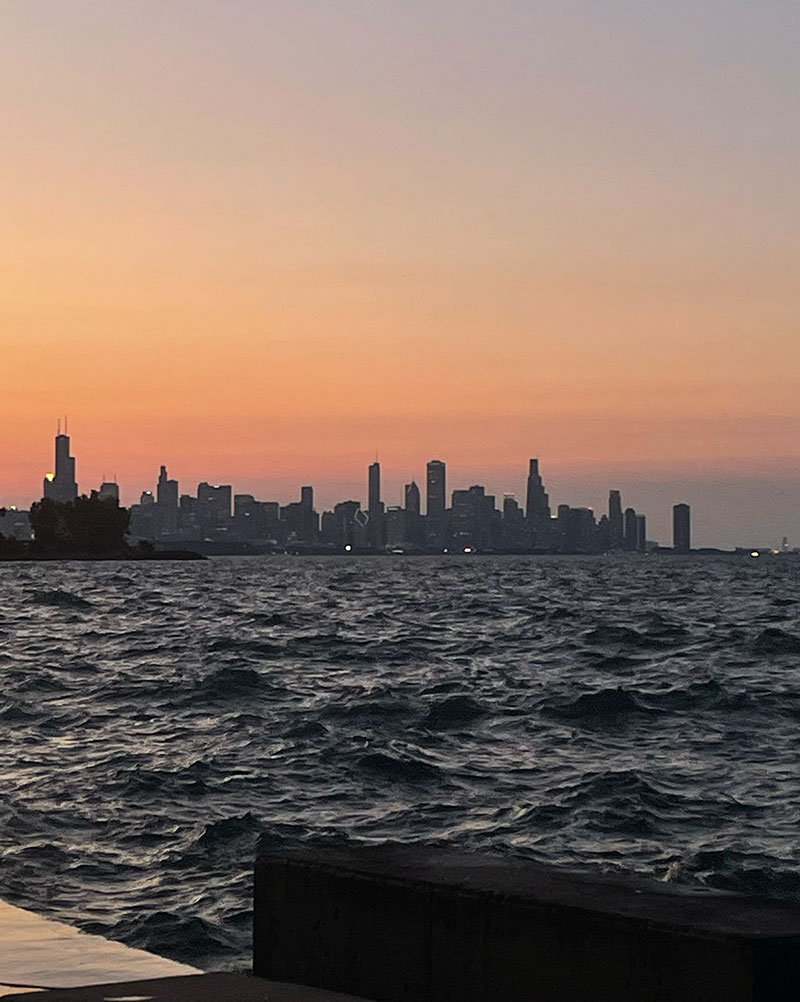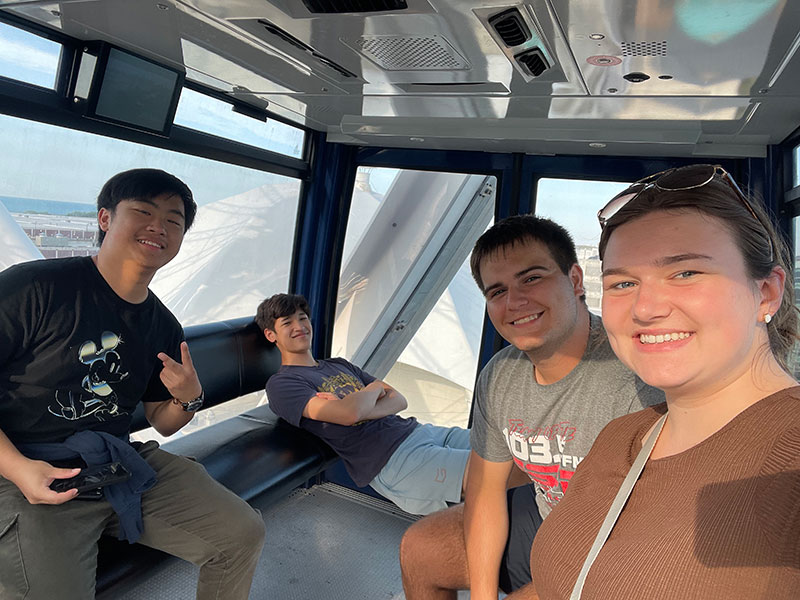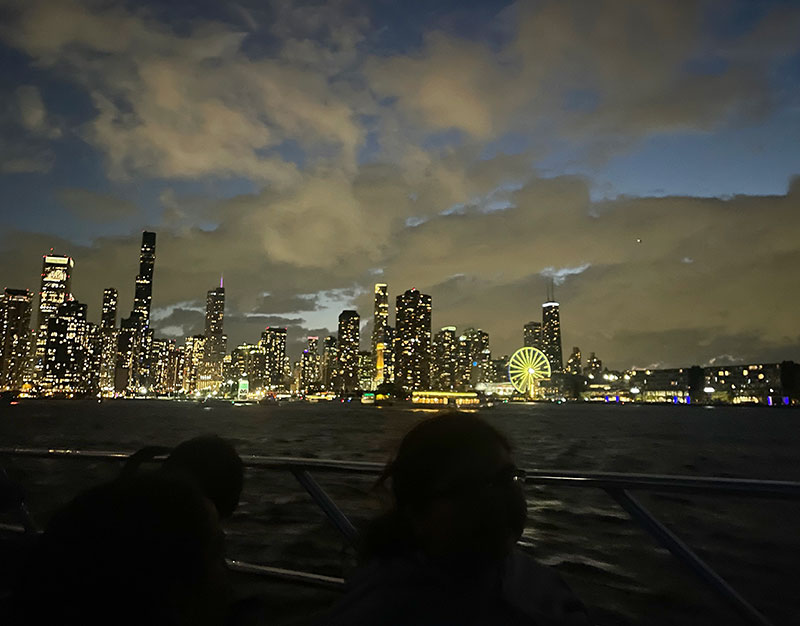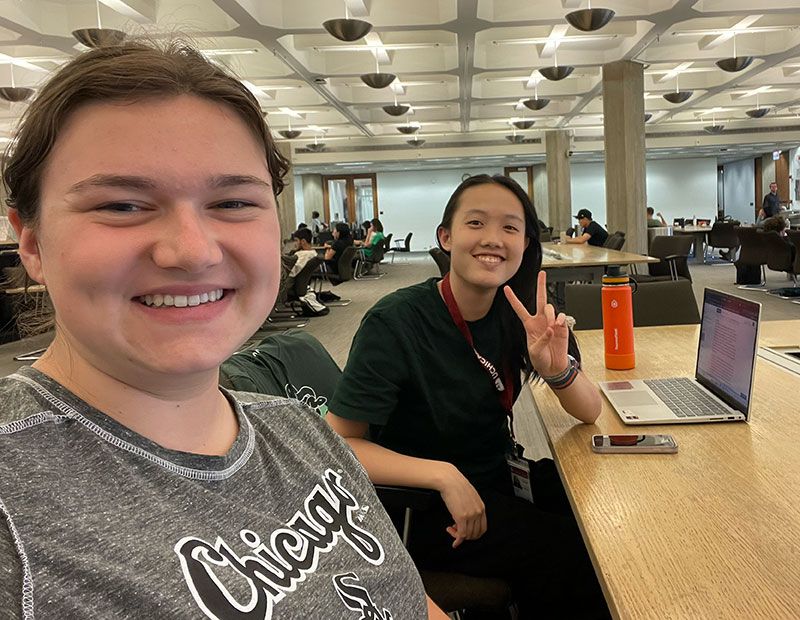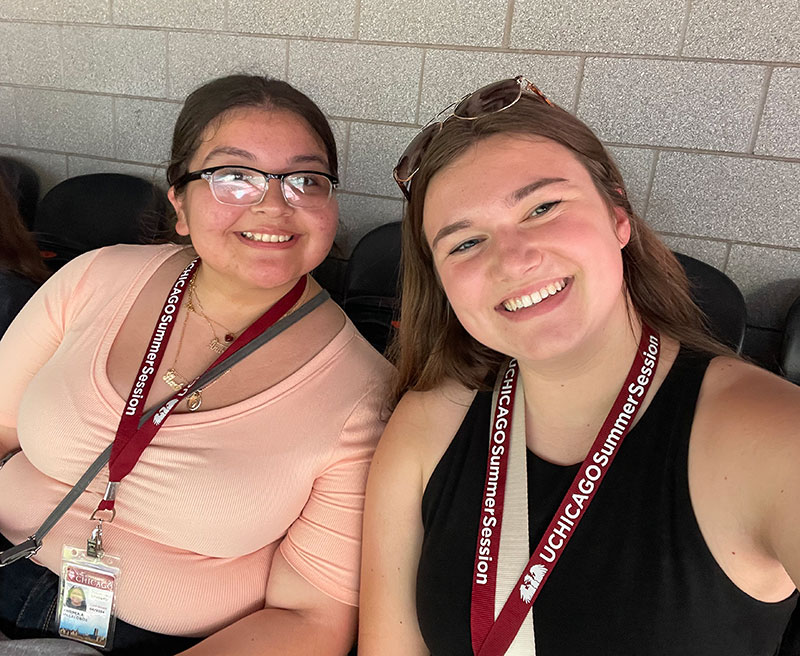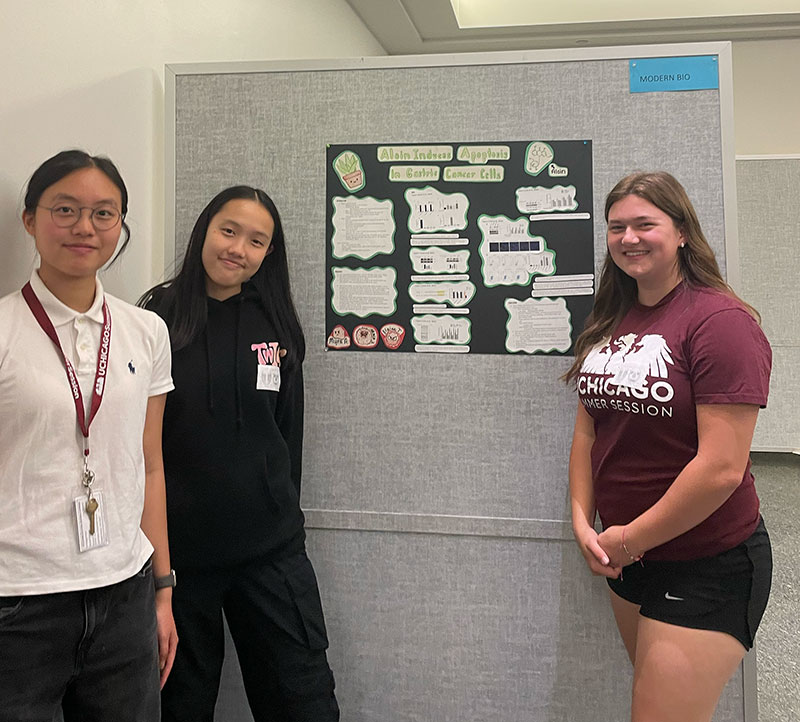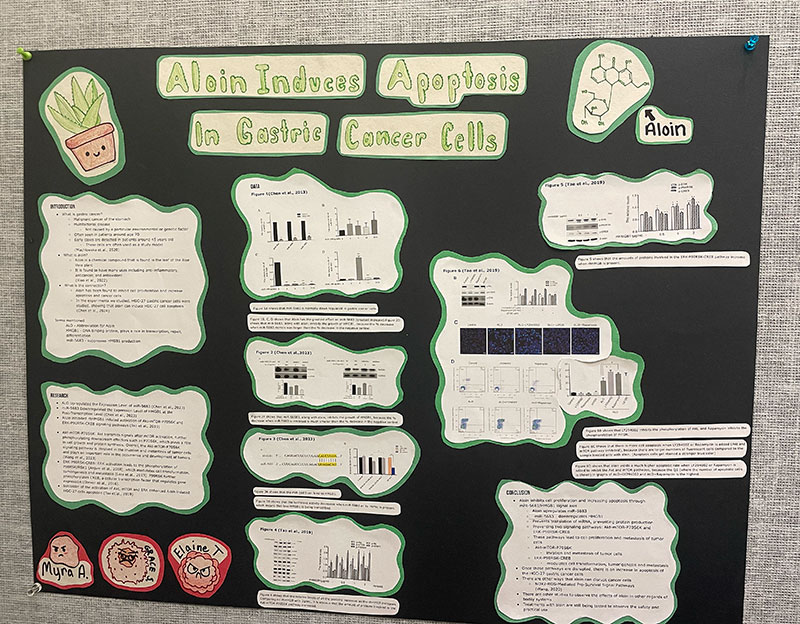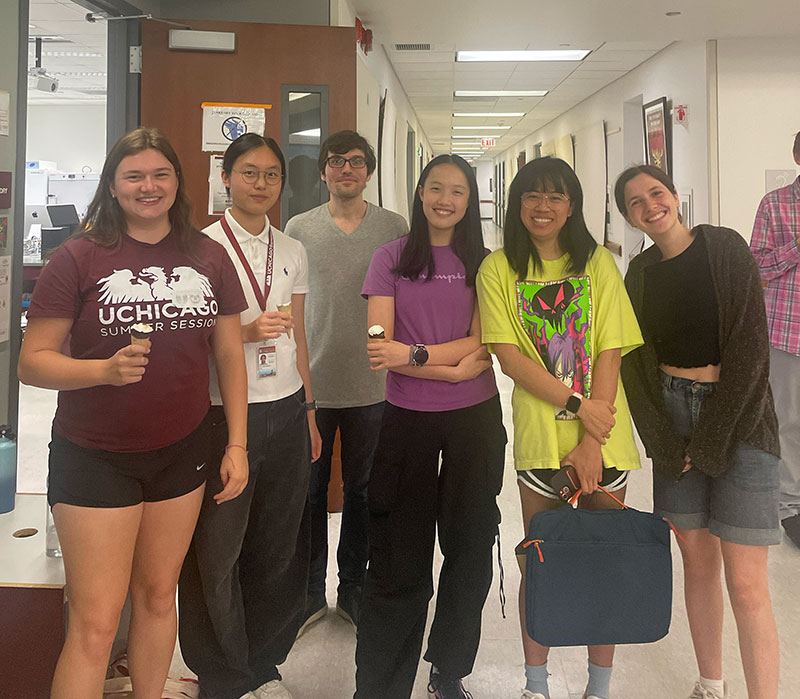Myra Anderson reports on her experience at the University of Chicago Summer Immersion Program where she is studying “Computational Biology.” During her first week, Myra connected with students from around the world and made friends with students who are attending other courses as they shared their individual stories and experiences. Myra was also able to explore the campus and get settled into her dorm room. After orientation and settling in, Mrya was ready to begin her course.
“To sum up my first week in one word, I would have to say it has been extraordinary. Between my peers and the staff, everyone has a true love for learning and a desire to achieve great things. I was not expecting how devoted all of my peers would be. Although this program has already exceeded my expectations, there is much more to see and learn over the next two weeks,” Myra says.
“Like any other class, the first day was very introductory and we went through a lab safety lecture. In the afternoon, we had our first lab that started with micro-pipetting. We simply measured small amounts of dye into containers. There was no homework for that day, we just had to do a lab report in our lab notebooks that we will keep throughout the course. That evening, we had the opportunity to meet in the dorm lounge to watch a movie. We got to watch ‘Mamma Mia’ and it was a fun social event,” Myra reports.
“For class on Thursday, we started the morning with a normal lecture about cells and cell functions. The information that we learned in class was fast-paced, however, I was able to keep up with what we learned. Before our afternoon class work, we listened to a presentation from a researcher at UChicago. She studies lateral lines in Zebrafish. Listening to her talk about research made me love this field even more because her methods were so in-depth. However, at times there was so much information it was hard to keep up. The afternoon lab session was spent examining bacteria under microscopes and we plated some bacteria on agar plates. The bacteria plating started our main theme of the lab, antibiotic resistance in bacteria. The plates had different antibiotics on them, so that we could observe what bacteria strains were resistant to them. On Monday, we will get to further access the samples and observe the developed bacteria,” Myra explains.
“In class on Friday, we had a similar schedule except we listened to poster presentations from students in the RIBS program (Research In The Biological Sciences). The work that they have done over the last 5 weeks was outstanding. Some students research cancer cells, while others study memory. Every group had something unique which was amazing to see. Listening to the presentations helped me learn a lot about research methods and the steps to scientific methods. The presentations also helped highlight systems biology which is a part of biology that our instructor explained. Systems biology is understanding every aspect of a process to in turn alter or manipulate the process for a desired effect. Systems biology will come in handy when I hopefully do research in college,” Mrya adds.
“Overall, this week of class has been impactful and I have a new appreciation for biology. The level of learning and study has been very similar to a true college experience and I am grateful that I am in this course. The final for our class will be a research project and poster presentation and I expect that the assignment will help me get some good practice researching and compiling information,” Mrya says.
After class, Mrya and friends explored the city of Chicago visiting Lake Michigan and attending the musical SIX at the James M. Netherland Theatre. “The performance was absolutely incredible and the theater was gorgeous. There are not enough words to describe how amazing the experience was. I love musical productions but had never seen SIX before and I was beyond impressed,” Mrya says.
“In summary, the first week has been wonderful and I love the University. I am really getting an elevated academic experience outside of anything that I have been to before. This has also been improved by getting to see other students from the research program and getting to listen to guest speakers that do research on campus. I am hopeful that next week will bring even more growth as the course continues,” Mrya reports.
Week Two — Incredible Learning Experience!
Myra says that the second week of her course has been an incredible learning experience, causing her “love for science to grow immensely.”
“On Monday we learned about cell division and cancer. This has always been an area of study that I have wanted to explore for a long time. Our professor Dr. B has done a lot of research on cancer because it was his undergraduate research topic. Since he has extensive knowledge on the subject, I was able to ask him questions about it and he answered to the best of his ability. Getting this in depth explanation gave me information on the pathway of the disease and a new perspective on it. In our lab time on Monday, we studied our inoculated agar plates, the bacteria growth that we put on plates the previous Friday. Additionally, we got experience putting the bacteria on slides to observe under microscopes. As a part of the slides we did a gram staining on the bacteria. The gram staining was used in order to better see the bacteria, but also determine specific traits about the bacteria. The process to stain the bacteria has to be very exact in order to get the best outcome. Unfortunately, my group had a slight error on 2 of the slides so our results were slightly off. Despite this, it was a good learning opportunity and we were able to identify our mistakes,” Myra explains.
“The next day, Tuesday, we studied metabolic processes, cellular respiration, and fermentation. Our afternoon lab was designed to learn about real life techniques to understand cellular respiration. The previous day we set up a broth inoculation by adding our bacteria into a broth tube. When we finally observed the growth patterns of the bacteria, we could tell whether or not the bacteria could use oxygen in cellular respiration. This was just added information into discovering what type of bacteria strains we were working with. The latter half of lab time was spent setting up a Polymerase Chain Reaction to amplify DNA,” Myra adds.
“On Wednesday, we studied genes and gene replication. I understood this topic quite well so I did not have to ask too many questions. Instead of going to the lab in the afternoon, we listened to a guest speaker. His presentation has impacted my career decisions more than any other presentation we listened to. Dr. Izumchenko is a translational researcher at the University of Chicago. At the moment he is a part of OrisDX, a company working to produce a test that detects oral cancer from saliva. He gave us a presentation on the process of translational research. This is the type of research that I hope to be a part of some day. By definition, translational research is the process from taking lab discoveries and implementing them into clinical practice. I learned that the process can take a really long time and there is no guarantee that the research will ever be put into practice. I learned so much from his presentation and my main takeaway was this: going to medical school and becoming an MD is the best way to enter into translational research,” Myra reports.
“Thursday consisted of gene translation and transcription, the processes of gene expression. Every Thursday, during lunch, we have a guest speaker. This week we listened to Dr. Sam Light discuss the microbiome of humans and the health related benefits to it. This is a topic that I find really interesting, so it was quite convenient that we learned about it. Then, in the lab, we evaluated our Polymerase Chain Reaction (PCR) with a gel electrophoresis. The PCR tied into our lecture because it uses primers, enzymes, and nucleotides to replicate and amplify the DNA into larger quantities. The amplified DNA can then be used for sequencing later on. I enjoyed this lab because we were using current technology and processes to determine the type of bacteria we were working with. All of the prior lab work was part of determining traits and characteristics of the bacteria before we got to sequence it. Due to our short class time, our professor gave us files to DNA that he had already sent in for sequencing. All we had to do was submit the files to a database that would match our bacteria to its type. In the end we discovered that both strain A and B were Escherichia Coli but they were different strains of it. I loved getting to see the final results of our studies on the A and B bacteria,” Mrya says.
“To wrap up the week, we studied regulation of gene expression on Friday. In the afternoon, we completed a mock Covid-19 test using an ELISA (Enzyme-linked Immunosorbent Assay). I enjoyed that this was a very relevant and real world application of all that we have been learning. Many clinical labs use ELISAs to assess whether someone is sick or not. It was an enjoyable way to wrap up the week. Now, I am looking at research topics for the final project in the class,” Mrya adds.
When not in class, Mrya was able to explore the city of Chicago, plus spend time with friends playing card games, trying out new local restaurants, and making bracelets. She attended a soccer game at Soldier field, visited the Field Museum, attended a speed boat architectural tour of Chicago, and watched fireworks at night from the tour boat.
“Without a doubt, the second week of UChicago has been incredible. I have experienced even more than I did the first week and now I have a feel for the city. This has been a wonderful opportunity, and I believe that I have been strongly guided in the direction that I want to go in when I get into college,” Mrya says.
Week Three — Final Presentations
Mrya spent her third and final week staying up late to complete research and prepare for her final presentation. She also managed to get together with friends to explore more of Chicago. They biked along lake Michigan, visited “The Bean,” ate at Portillo’s, visited Navy Pier, played a round of mini-golf, and rode the Centennial. Then, it was back to class on Monday.
“We had to complete a final project for class and it was going to be a bittersweet week. I attended my usual morning lecture and we learned about Mendelian Genetics. This set the stage for our lab experiment with CRISPR gene editing. In the lab for the first day of CRISP, we started by cutting the DNA and adding a plasmid, a small circular DNA. Our main goal was to disrupt the lacZ gene in E. Coli, which codes for the breakdown of lactose. The process of the experiment was rather simple. We combined E. Coli, a buffer solution, and the plasmids. We used a heat shock to insert the plasmids so that the cell will take up the gene. The mixture had to sit and then we put them on agar plates to let our bacteria grow. This process was a lot different than I thought CRISPR worked. It is also a very relevant technology that has been used to produce many important materials. It was good to get experience using recent technology,” Myra explains.
“On Tuesday, we learned about mutations in DNA and the evolutionary aspect of DNA. This is a very important part of understanding different organisms and most importantly the study of cancer. In the afternoon we continued our CRISPR experiment by visually examining the growth. This could tell us whether or not the test worked, however, we wanted to be sure, so we set up a PCR. The PCR would amplify the DNA in order to calculate the base pairs on a gel electrophoresis. This was the second time we did a PCR, but I liked being able to use these methods in different settings and to reinforce the usefulness of the processes,” Myra reports.
“After class, I decided to go to the Harper Memorial Library main reading/study room. It was absolutely beautiful. The architecture on campus, like the memorial library, is just incredible. While I was there I did research for my final project. My research was on a chemical compound named Aloin and the effects that it has on gastric cancer cells. The research took a while because we had to study the pathway in depth. After I left the library, I went to the gym on the weekly gym trip. Finally, I ended the day by getting to paint in the house lounge. I decided to paint some hydrangea flowers in a vase. It was a nice relaxing way to end the day,” Myra adds.
“Wednesday was a challenging day to get through. My group and I decided that we wanted to be completely finished with our research so that we could focus our efforts on Thursday to piece together our poster. We completed our lecture on ecology, specifically looking at how microbes affect our environment. Afterwards we completed our final lab of the session and the last step of CRISPR. We did a gel electrophoresis to see that our lacZ gene was removed from the bacteria. The experiment was a success and then we could focus on our presentation. My friends Grace, Elaine, and I went to the Reigenstien library to complete our work together,” Myra explains.
“Thursday was incredibly productive. Our last lecture was on biological technology, tying in the modern applications of biology, like the course was focused on. We had our last guest speaker who talked about T-Cells and the immune system. Instead of a lab, we got time to work on our posters. It took around 4 hours to complete the poster. This included final touches on our research and data, printing, gluing, and even adding some cute details to incorporate our personalities. We were very proud of our final result and from there we just had to worry about presenting it the following day,” Myra adds.
“The last day of the session, I presented in the morning and it went exceptionally well. I enjoy doing presentations so this was fairly easy for me. We presented in an expo style, there were groups from all of the biology classes set up at their own stations and people walked around and chose which presentations they wanted to watch. Grace and Elaine did great as well so it was a relief that we were completely done with the course by lunch time. After lunch, we listened to presentations from the remaining groups. I even got to listen to Amik Ahmed’s presentation on biofuel. It was amazing to learn so much from so many different people. Therefore, it was a great way to end the course. It also helped that professors bought us ice cream to celebrate,” Myra reports.
“This was the best end to this session that I could ever ask for. I ended my time at UChicago surrounded by friends that were kind and passionate about learning. I know that they will all achieve great things one day and I will be so excited if I get to rejoin them in their journey later on. I know that many of them are going to apply to UChicago, and I will as well. The academics at UChicago were simply amazing. Their professors, TA’s, RA’s, and everyone else were exceptional. They were there to advance my experience and help me to learn in the academic and social setting. I loved everything about the Summer Session and I learned so much about Chicago,” Myra says.
“This experience has helped me focus my career choices to becoming an MD to do research or just staying somewhere in the medical field. I have so much more to experience, but at the moment I am confident in going into college. Before this, I already knew that I had the capability to live on my own, but this has just reassured it. I faced many social and emotional challenges, however, I was able to navigate through them successfully. Overall, this experience will carry me on through my senior year and be an inspiration when I am ready to enter college,” Myra adds.
Excellent work, Myra. We are happy to hear that you enjoyed your time at the University of Chicago, and learned helpful information about your career options!
>> Read Myra Anderson’s Final Report (PDF File, 38 KB).
>> Learn about the other students’ experiences in the GFF Scholarship Program.

